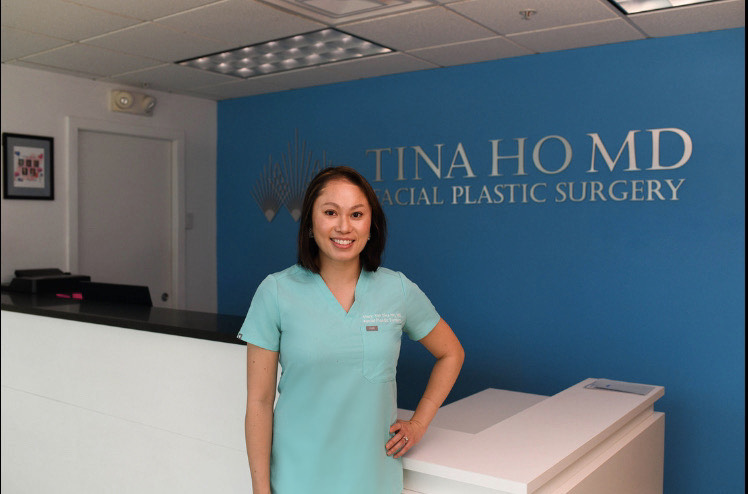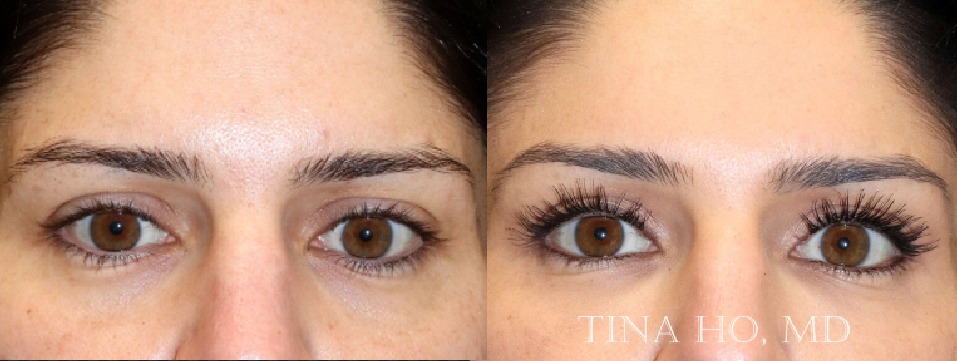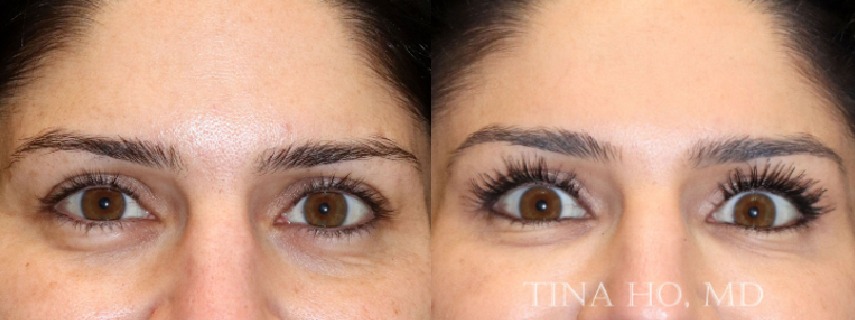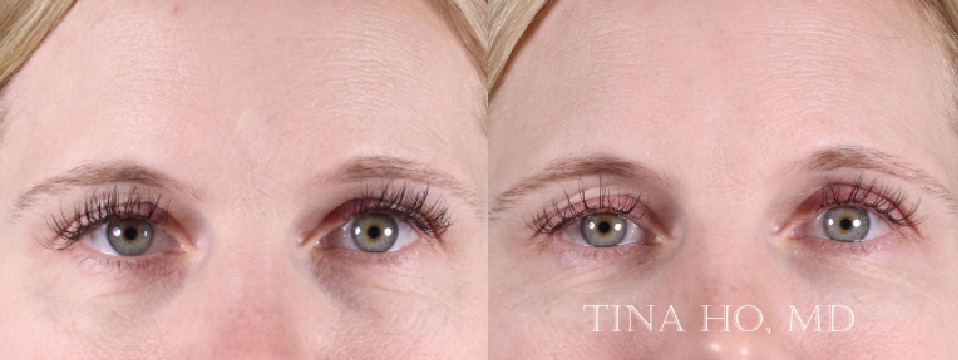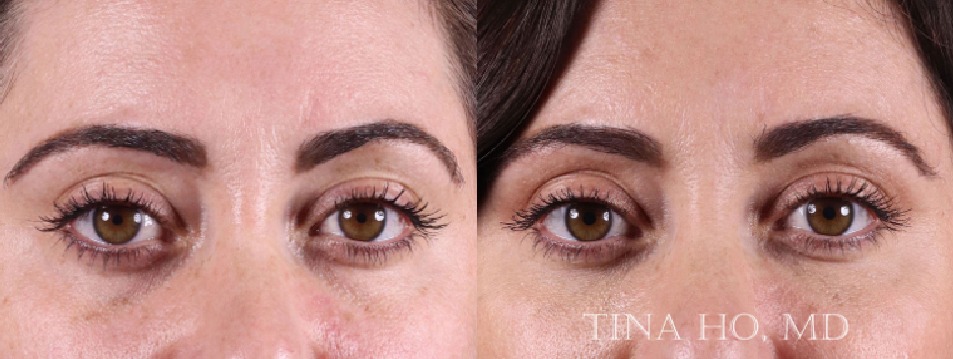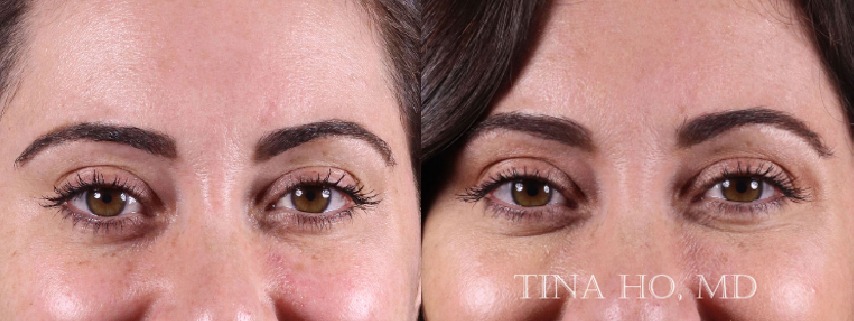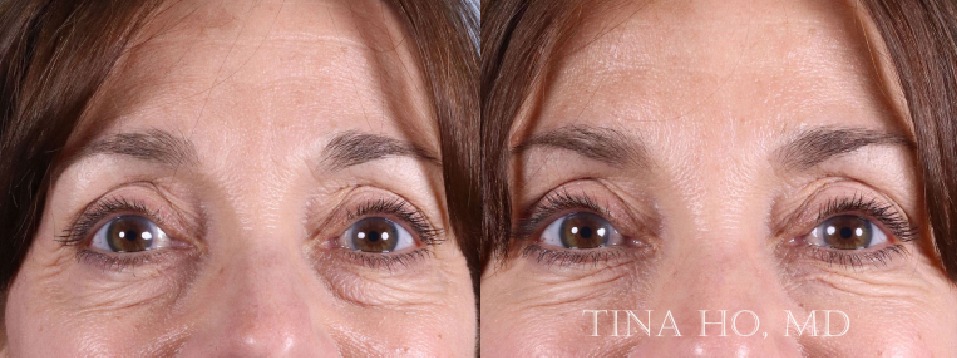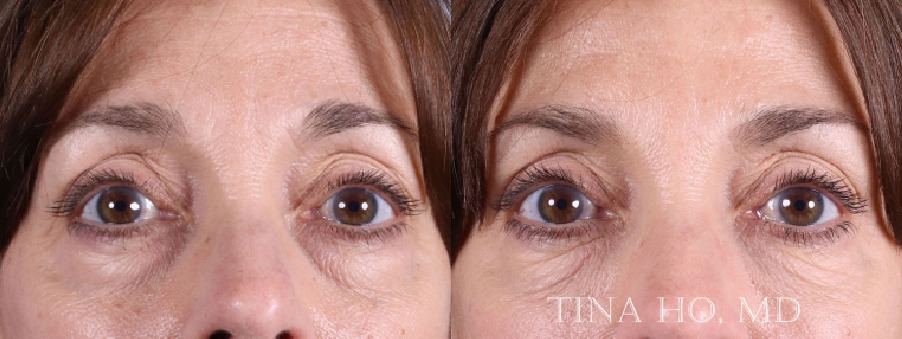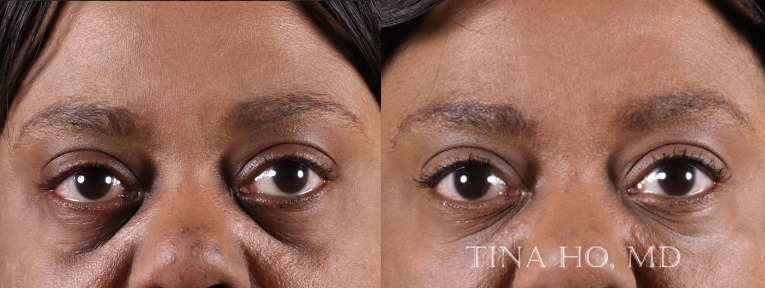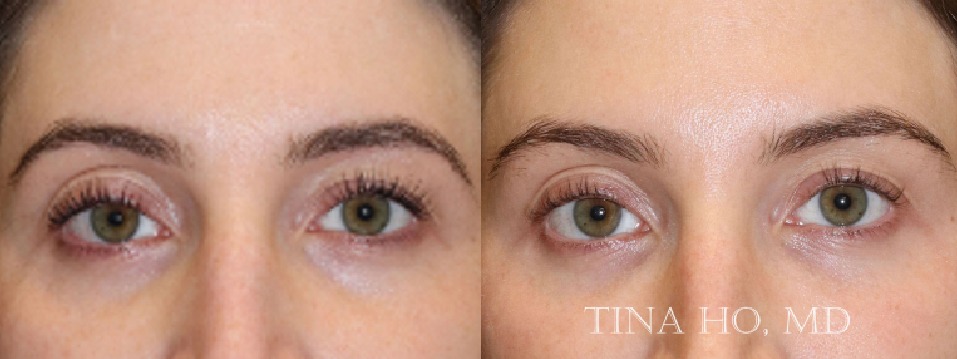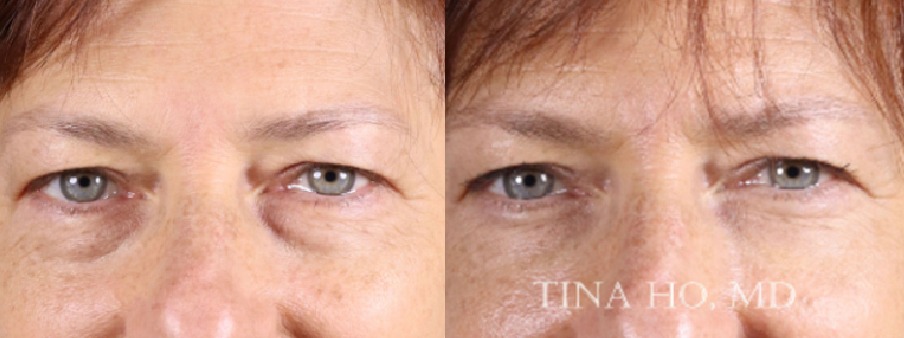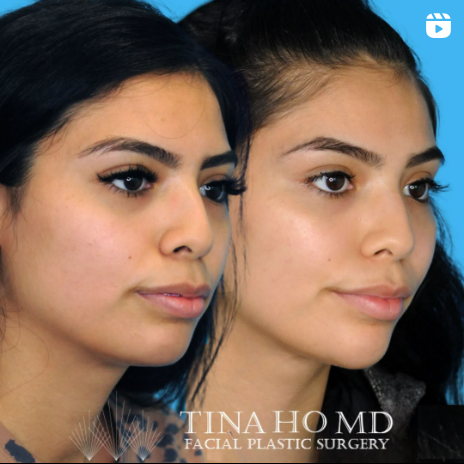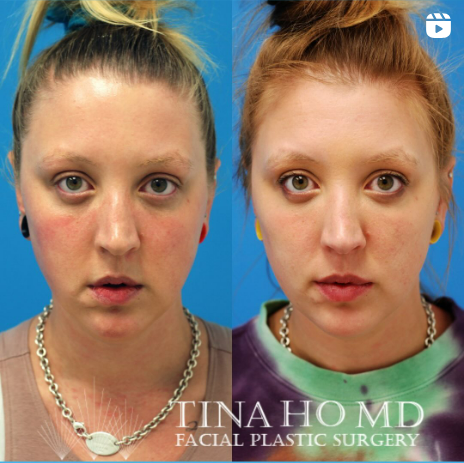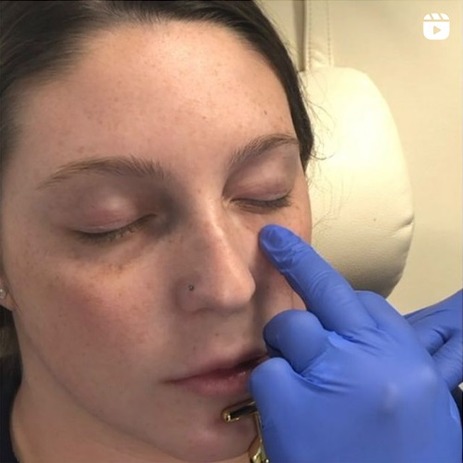Table of Contents


Before & After
View Gallery
What is Eye Rejuvenation?


Neurotoxins and fillers are two of the most common types of injectable procedures utilized in eye rejuvenation. Neurotoxins weaken target muscles by blocking the release of a neurotransmitter that stimulates the muscles. Neurotoxins are routinely injected around the eyebrows and eyes to minimize crows feet wrinkle lines, improve brow elevation, and overall rejuvenate the eyes with a more awake and refreshed look. The treatment effect of neurotoxins is realized within one to weeks after the procedure and lasts up to 3 months on average. Common neurotoxin products used by Dr. Ho in eye rejuvenation include Botox®, Dysport®, and Xeomin®. Filler injections are frequently utilized in eye rejuvenation to address under-eye hollowing as well as improve cheek volume and projection. Hyaluronic acid is the most common type of material found in fillers. Depending on the type of product used and the area of the face treated, the treatment effect of fillers ranges from 1 to 2 years. Common filler products used by Dr. Ho for improving under-eye hollowing include Restylane® and Belotero®. Skin rejuvenation procedures such as laser resurfacing and chemical peels can also be performed in conjunction with injectables to improve skin tone and texture around the eyes.
Eye rejuvenation requires the expertise of a surgeon who specializes in plastic surgery of the face and understands facial anatomy well. Dr. Ho is highly experienced in injectables and skin resurfacing procedures and performs each procedure in an artistic manner according to the anatomic features and aesthetic goals of the individual patient.
Tear trough fillers

Tear trough fillers address concerns of undereye dark circles by restoring volume to tthe region. The procedure for delivery of tear trough fillers is minimally invasive. Dermal fillers are injected into the tear trough area to deliver much-needed volume, resulting in a more even appearance and a more awake and youthful look.
Dr. Ho is highly experienced when it comes to treating the tear trough region using injectable dermal fillers. Her precision and skill make her an ideal choice for treatment. She most often injects the cheeks in addition to the undereye area to achieve the best rejuvenation results. Dr. Ho is highly sought out by patients in greater Philadelphia and the Main Line for tear trough filler treatment and is known as a regional specialist for this procedure. The tear trough area is a delicate region and should only be treated by experienced injectors who understand facial anatomy well and which patients are best tear trough filler candidates.
Am I an ideal candidate for Eye Rejuvenation?

If you have realistic expectations and goals and are in good physical health, you may be an ideal candidate for eye rejuvenation treatment.
Eye Rejuvenation Before and After Videos
Your Eye Rejuvenation consultation

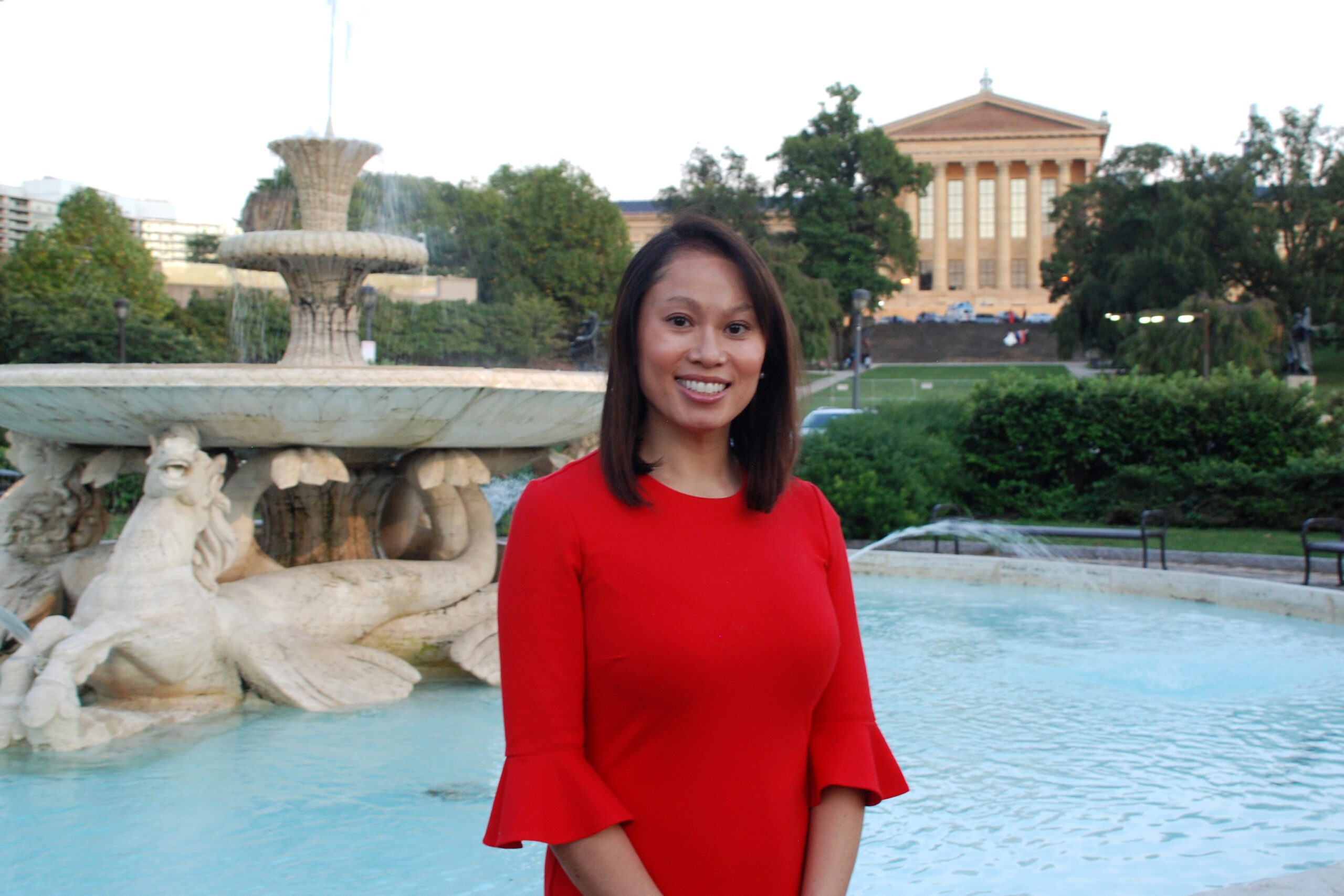
Dr. Ho will also ask you about your aesthetic goals for eye rejuvenation, and she will go over the details of the treatment, including preparation and aftercare. Your eyes and face will be examined, and you will be informed of any potential risks.
Educational Videos
BEFORE & AFTER PHOTOS
Book Now
– Dr. Tina Ho

FAQ’s

What is Dr. Ho’s approach to Eye Rejuvenation?
What should patients expect after Eye Rejuvenation injectable procedures?
What is Double Convexity or Double Bubble Deformity?
What is Tear Trough Deformity?
What is the cost of Eye Rejuvenation?
Filler starts at $800/syringe, may need minimum 2-4 syringes or more for adequate results, package specials start at $2100.
Contact us to learn more
Book Now

